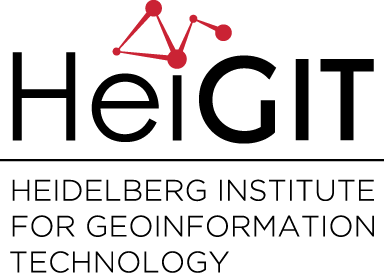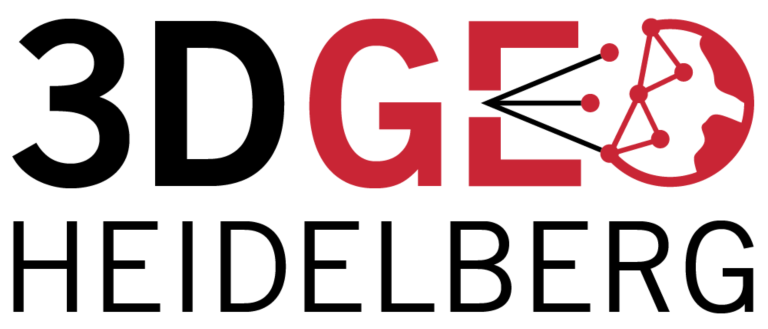Tag: OpenStreetMap
-
Generating Customized Pleasant Pedestrian Routes Based on OpenStreetMap Data
In a newly published open access paper, we present a system that generates customized pedestrian routes entirely based on data from OpenStreetMap (OSM). The system enables users to define to what extent they would like the route to have green areas (e.g., parks, squares, trees), social places (e.g., cafes, restaurants, shops) and quieter streets (i.e.,…
-
HeiGIT at the ‘Fachtagung Katastrophenvorsorge’
Last week the ‘Fachtagung Katastrophenvorsorge‘ took place in Berlin. The annual symposium, organized by the German Red Cross, brings various actors together involved in national and international disaster risk reduction. Our workshop, which we were running together with the Federal Office of Civil Protection and Disaster Assistance (BBK) and the German Aerospace Centre (DLR), focused…
-
Visit Openrouteservice this week at INTERGEO 2018 in Frankfurt at the BKG booth
We are happy to announce that we are going to be part of INTERGEO 2018 in Frankfurt this week on October 16.-18. This event being the “global hub of the geospatial community” has quite something to offer with hundreds and hundreds of innovative companies showcasing their products and visions. We are joining up with the Federal Agency for Cartography and…
-
Deep Learning from Multiple Crowds: A Case Study of Humanitarian Mapping
Our paper about Deep Learning from Multiple Crowds: A Case Study of Humanitarian Mapping is available online now. Satellite images are widely applied in humanitarian mapping which labels buildings, roads and so on for humanitarian aid and economic development. However, the labeling now is mostly done by volunteers. In a recently accepted study, we utilize deep…
-
EuroGEOSS Workshop: Crowdsourcing Land Use Map Validation
At the recent EuroGEOSS Workshop in Geneva, LandSense researchers from IIASA and Heidelberg University hosted an interactive mapping session to showcase the power of crowdsourcing for map validations as announced earlier. Using the openly available Land Cover Validation Platform (LACO-Wiki), participants collaboratively validated a land use and land cover map of Geneva, which brings together data…
-
Freiwilligentag 2018 – Aufruf zur Teilnahme an der „Routenplaner-Erfassungsrallye“ der Stadt Heidelberg am 15.09.
Wie komme ich als Rollstuhlfahrerin oder Rollstuhlfahrer am besten vom Bismarckplatz zum Rathaus? Welche Wege ohne Hindernisse können Eltern mit Kinderwagen nutzen? Helfen soll dabei ein neuer Routenplaner der Stadt Heidelberg. Der Routenplaner basiert auf dem OpenRouteService der Abteilung Geoinformatik der Universität Heidelberg und wurde in einem gemeinsamen vom Ministerium für Inneres, Digitalisierung und Migration Baden-Württemberg geförderten Projekt um…
-
Meet HeiGIT/GIScience @HOT Summit/ FOSS4G in Dar es Salaam
HeiGIT/GIScience Research Group is looking forward to present our latest research, services and developments at the HOT Summit/ FOSS4G in beautiful Dar es Salaam. Sabrina Marx and Melanie Eckle of the Geoinformation for Humanitarian Aid group will provide an overview of our latest projects and ideas, and current collaborative projects with the Humanitarian OpenStreetMap Team.…
-
Deep Learning from Multiple Crowds: A Case Study of Humanitarian Mapping
Satellite images are widely applied in humanitarian mapping which labels buildings, roads and so on for humanitarian aid and economic development. However, the labeling now is mostly done by volunteers. In a recently accepted study, we utilize deep learning to solve humanitarian mapping tasks of a mobile software named MapSwipe. The current deep learning techniques…
-
New Jupyter Notebook: Analysis of Access to Health Care using OpenRouteService Isochrones API
We published a new jupyter notebook which depicts how to use the OpenRouteService Isochrones API to analyse health care acessibility in Madagascar. In the case of a disaster (natural or man made), a country is not only affected by the intensity of the disaster but also by it’s own vulnerability to it. Countries have different…
-
State of the Map 2019 is coming to Heidelberg
Maps, maps, maps! After a great state of the map conference in Milan, the OpenStreetMap community can already get excited for the next global gathering in 2019: We are very honored to have been selected to welcome the global OSM community in Heidelberg in 2019! The good news have been shared during the closing ceremony…
-
A new infrastructure for exploring and analyzing OpenStreetMap
Ever wondered how you can generate/use some meta-information about OpenStreetMap for your project? Are you interested in visualizing different aspects of OpenStreetMap data? In the article below, we present a server infrastructure to collect and process data about different aspects of OpenStreetMap. The resulting data are offered publicly in a common container format, which fosters…
-
Your support for MAnnheimer MAPAthons (MAMAPA)
Beginning of May the recently launched MAMAPA project reached yet another milestone. Four very successful MAMAPA mapathons were already organized in the Mannheimer Abendakademie, supported by CartONG, HeiGIT/ disastermappers heidelberg and local tandems, and there are hopefully many more to come… To build a sustainable future for the MAMAPA project, members of HeiGIT, CartONG and…


